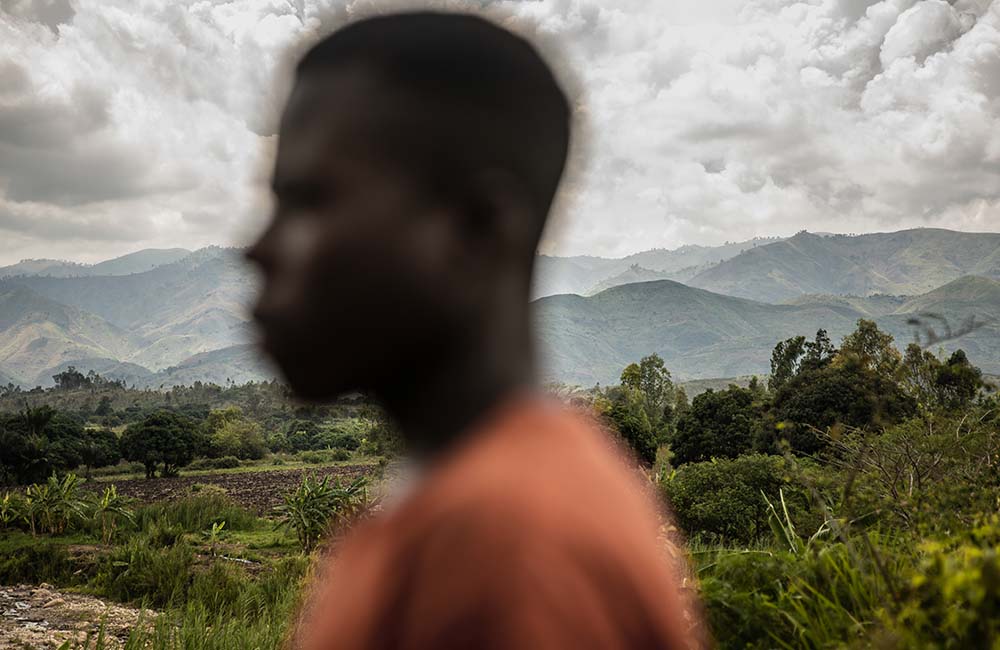Millions of children are at risk of being recruited as child soldiers
Worldwide, more children than ever are living in conflict. One in six children - 452 million children globally - lived in a conflict zone in 2020. That is a 5% increase since 2019.
In conflict areas, the risk of grave violations being committed against children also increases. Our new report, Stop the War on Children: A Crisis of Recruitment, reveals the share of children living in conflict zones who are at risk of being recruited and used by armed forces or armed groups has tripled from less than 5% in 1990 (99 million children) to more than 14% in 2020 (337 million children).
Many children are forced into joining armed groups, others are coerced because of a range of factors, including lack of educational opportunities or the desire to defend their family.
Jean - a child solider’s story
Jean* was 16 years old when he was taken by an armed group from a nearby swimming hole. In the Democratic Republic of the Congo, conflict has been ongoing between armed groups and the government since 2016.
The armed group took Jean and other children to the forest where they were trained to kill. “They tortured us, beat us, and taught us how to kill, smoke hemp, and kidnap people,” says Jean. “We have suffered a lot.”

Jean*, 17 was recruited by an armed group when he was just 16 in South Kivu, DRC.
Photo: Hugh Kinsella Cunningham/Save the Children
The children slept on the forest floor, occasionally raiding the town or farms for food. “We spent the night on the ground without eating anything. I took care of preparing food for my bosses, looking for firewood, and stealing other people's cattle, bananas, and cassava.”
Jean lived in the forest for seven months, before he managed to escape with the help of Save the Children. “They took us away. I fled with my friends,” he says.
Now, Jean is back with his family, working on the farm and helping farm and sell mangoes. But his life has not been unaffected. “My life has changed since I left the forest. I eat well, wash myself, and interact with others. However, I’ve never told my family members about what I went through. I'm afraid to tell my family because it hurts a lot, and it may cause tension.”
The stigma of having been with an armed group remains. “Since my return, I’m treated differently. Parents are afraid to let their children play with anyone who was in the forest. When I came back, [I realized] that people were afraid of me. They were afraid of me because I left the forest. They were afraid of me because they knew that I was in an armed group. I haven't been among them [the community] for a long time.”
How Save the Children is helping former child soldiers
From 2017 to 2020 Save the Children and its partners in the DRC rescued 357 children (including 73 girls and 284 boys) from armed groups from the South Kivu province. The children were reunited with their biological families and given support towards a better future. The children were supported with vocational training and resources to start sewing, goat rearing or hairdressing.
With the assistance of KUA, a Save the Children partner organisation, Jean was trained as a hairdresser and hopes to also return to school one day. “I’d prefer to go back to school and be in good health. The support I received was very helpful, since life was difficult. But thanks to the help from these organisations [Save the Children and KUA], I got access to food and health care.”
Not all children escape their captors, like Jean. In 2020, more than 5,000 boys and 2,000 girls were killed or maimed in conflict. When they do escape, they can often be rejected by their family or community. These children will need long-term and intensive support to help them rebuild their future.
Save the Children is committed to protecting children in conflict zones from recruitment and use by armed actors. We need to hold perpetrators of violations to account and take practical action to protect children and support their recovery. This is how we stop the war on children.